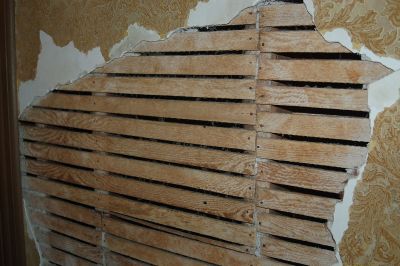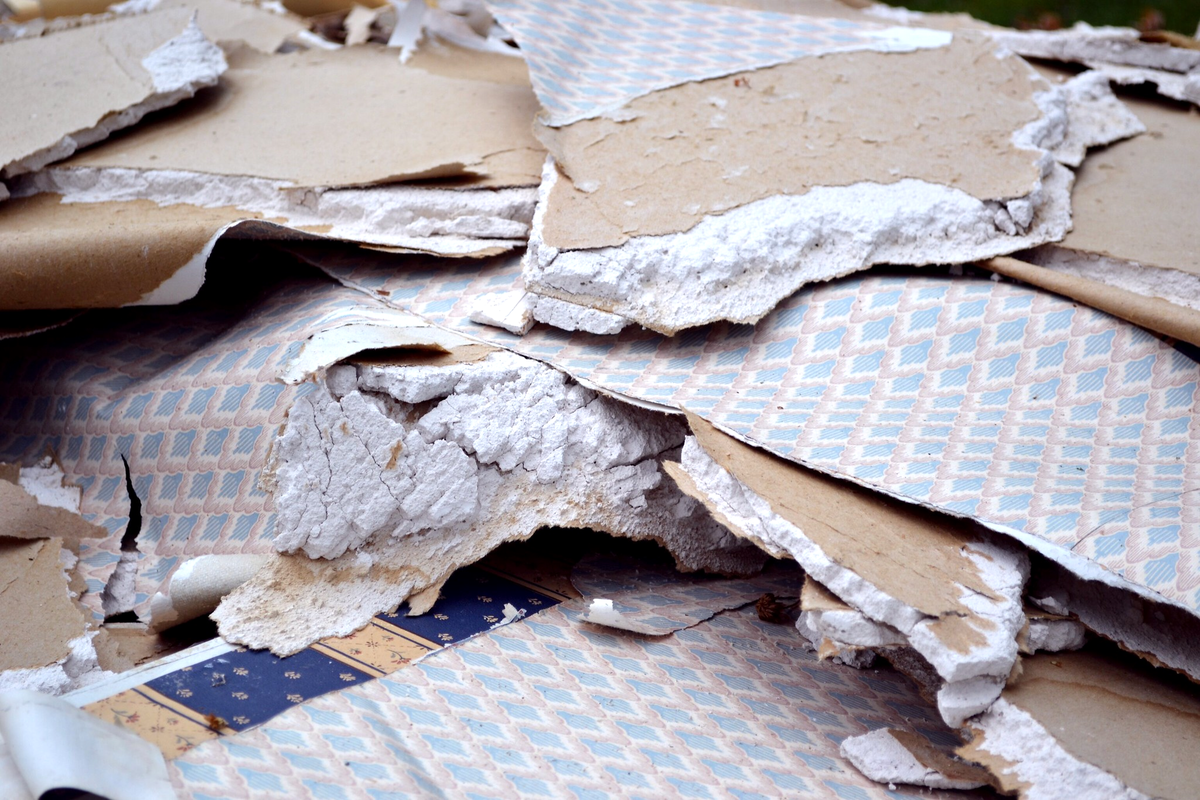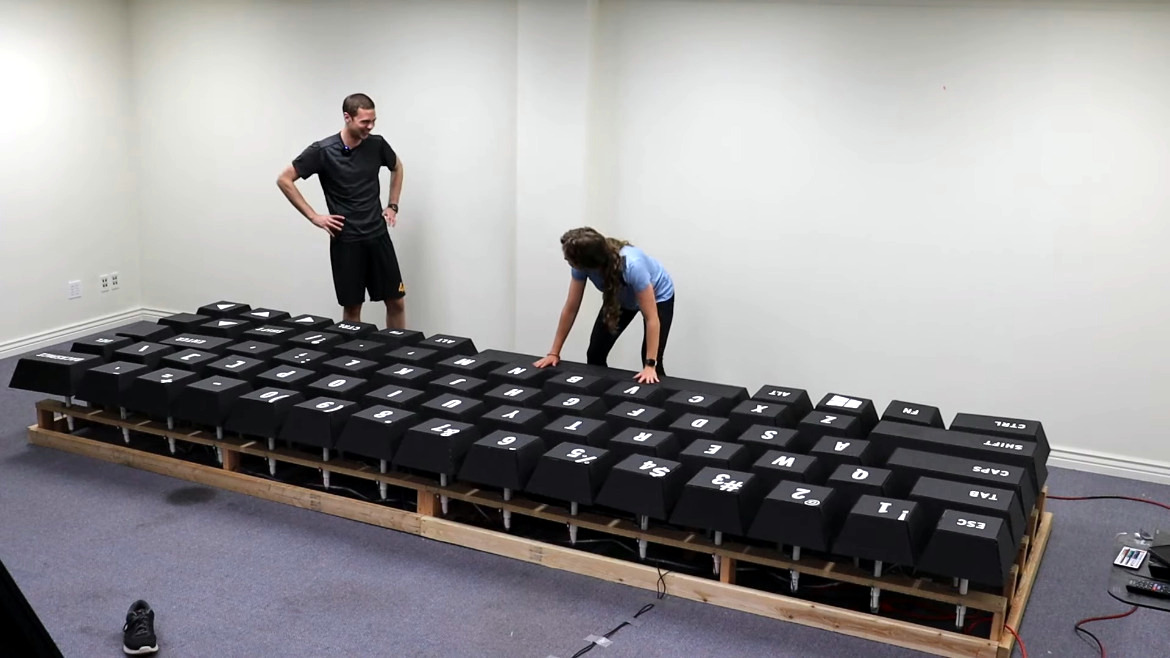A Brief History of Drywall or: How Drywall Dominated the Construction World
Drywall is common and ubiquitous in commercial and residential buildings today. Many of us hardly think about it until we need to fix a broken hole in it.
However, drywall hasn't been around forever and has in fact taken many years to establish itself as a popular building material. Today we are going to see how it was born and why it has continued to dominate the construction world.
Before drywall A lath and plaster wall, with wallpaper applied on top. Significant skill is required to apply a smooth, even plaster finish. Credit: Lmcelhiney. CC-BY-SA-4.0
A lath and plaster wall, with wallpaper applied on top. Significant skill is required to apply a smooth, even plaster finish. Credit: Lmcelhiney. CC-BY-SA-4.0Before drywall existed, walls were constructed in a time-consuming process called lath and plaster. This usually involved nailing many thin strips of wood to the wooden structure of a house, to make up the walls and ceilings. The strips of wood, or slats, served as the substrate on which the skilled craftsmen applied the plaster.
The plaster was applied wet and would take a long time to dry. Plastering walls was often impossible in cooler weather, and the work required significant skill to achieve quality results. Over the years, techniques and materials have changed and improved, such as the introduction of wire mesh slats and faster-drying coatings. However, the fundamental limitations of the process remained.
Faster, with less messVarious companies and individuals began experimenting with various methods of producing rigid and pre-cast plasterboard in the late 19th century. The main root of modern drywall began when the Sackett Plaster Board company continued to develop SackettBoard around this time. It was made of alternating layers of plaster and wool felt paper, usually four layers thick.
Eventually, the Sackett operation was taken over by the United States Gypsum Corporation. The product was further developed and introduced to the market under the name "Sheetrock". It featured a layer of compressed gypsum powder, between a layer of paper on either side.
Some of these early products were used as battens, with small panels attached to the walls as a substrate for additional hand plaster. However, the material was quickly developed into today's large-scale drywall sheets.

Drywall is common and ubiquitous in commercial and residential buildings today. Many of us hardly think about it until we need to fix a broken hole in it.
However, drywall hasn't been around forever and has in fact taken many years to establish itself as a popular building material. Today we are going to see how it was born and why it has continued to dominate the construction world.
Before drywall A lath and plaster wall, with wallpaper applied on top. Significant skill is required to apply a smooth, even plaster finish. Credit: Lmcelhiney. CC-BY-SA-4.0
A lath and plaster wall, with wallpaper applied on top. Significant skill is required to apply a smooth, even plaster finish. Credit: Lmcelhiney. CC-BY-SA-4.0Before drywall existed, walls were constructed in a time-consuming process called lath and plaster. This usually involved nailing many thin strips of wood to the wooden structure of a house, to make up the walls and ceilings. The strips of wood, or slats, served as the substrate on which the skilled craftsmen applied the plaster.
The plaster was applied wet and would take a long time to dry. Plastering walls was often impossible in cooler weather, and the work required significant skill to achieve quality results. Over the years, techniques and materials have changed and improved, such as the introduction of wire mesh slats and faster-drying coatings. However, the fundamental limitations of the process remained.
Faster, with less messVarious companies and individuals began experimenting with various methods of producing rigid and pre-cast plasterboard in the late 19th century. The main root of modern drywall began when the Sackett Plaster Board company continued to develop SackettBoard around this time. It was made of alternating layers of plaster and wool felt paper, usually four layers thick.
Eventually, the Sackett operation was taken over by the United States Gypsum Corporation. The product was further developed and introduced to the market under the name "Sheetrock". It featured a layer of compressed gypsum powder, between a layer of paper on either side.
Some of these early products were used as battens, with small panels attached to the walls as a substrate for additional hand plaster. However, the material was quickly developed into today's large-scale drywall sheets.
What's Your Reaction?








![Juno passes by Europa, revealing the mysterious and icy world [Updated]](https://vidianews.com/assets/img/bg_slider.png)
![Juno passes by Europa, revealing the mysterious and icy world [Updated]](https://cdn.arstechnica.net/wp-content/uploads/2022/09/PIA25330_-_JunoCam_Europa_-760x380.jpg)




![Three of ID's top PR executives quit ad firm Powerhouse [EXCLUSIVE]](https://variety.com/wp-content/uploads/2023/02/ID-PR-Logo.jpg?#)







